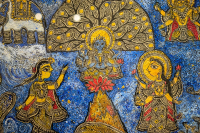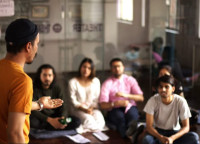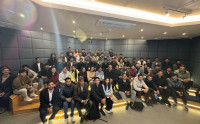Culture & Lifestyle
In Kathmandu, a community of enterprising Kashmiris thrives
For decades, hundreds of Kashmiri Muslims have come to Kathmandu and set up businesses that sell artefacts representing their identity.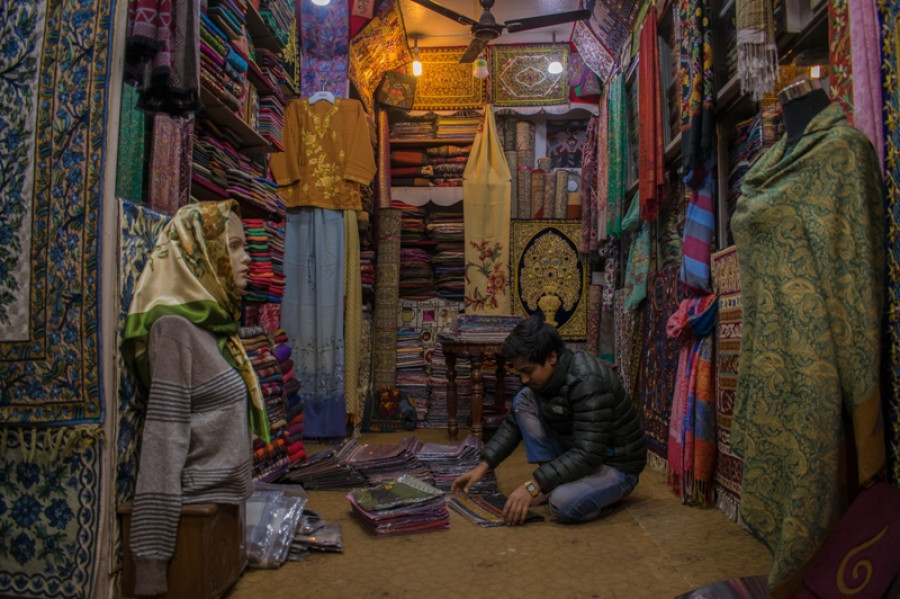
Tulsi Rauniyar
Every Friday at noon, thousands of Muslims gather at the Kashmiri Jama Masjid in Ghanta Ghar. Among them is Kurshid Ahmed Bazaz, 68, who comes every Friday. He is a businessman who has been running New Handicrafts, a handicraft store in Lazimpat, for decades.
A few stops away from New Handicrafts stands the elaborate handicraft store of Inayat Dijjo. After scanning through the whole of Crafts in Cave, a customer, Lydia Graham, a traveller from Australia, buys a Kashida, an embroidered piece inspired by the natural landscape of Kashmir. “Landscape designs, Chinar leaves, along with mythological figures are commonly used in Kashidas. Such embroidery is specially done on woollen or cotton cloth,” says Dijjo, the owner of Crafts in Cave.
Dijjo, 43, left his home amidst a sudden, violent outbreak in Kashmir when he was 15. He, with his family, moved to a number of places within India for a decade before they set foot in Kathmandu, in the early 2000s. “I couldn’t even complete my high school. My life changed over a matter of a few days,” says Dijjo.
Like Dijjo, hundreds of Kashmiri Muslims have moved to Kathmandu and set up a life of their own, with many of them stepping into business, starting enterprises that sell a range of artefacts——from pashmina shawls to jewellery boxes, to tiny curios and silk-laden carpets—that are an embedded part of their identity.
“Kashmiri handicrafts have a distinct spot in the global market. They are perfectly handcrafted from pure sheep wool. The magic of craftsmen’s fingers can be easily noticed on our silk laden carpets,” says Rouf Kolu, the owner of Cottage Arts Emporium, a store located in Thamel. The embroidery work and complex designs highly tempt buyers, and can cost from anywhere around a couple of thousand to a few lakhs. The handmade products are mostly couriered by traders from Kashmir to Kathmandu.
Many Kashmiris, like Kolu, moved to Kathmandu decades ago. Imtiaz Ahmed, the owner of Kashmir House in Sat Ghumti Road, Thamel, joined his uncle here in Kathmandu, in 1985, when the store opened. And their tale of resettling into a new country is not harrowing. “Back in the day, there were far less stores selling traditional handicrafts in this area. Now the population of Kashmiris has increased and competition is high. It’s not easy to stand out in the market these days,” says Ahmed, who frequently travels to and fro Kathmandu and Kashmir during off seasons.
For many Kashmiris, Kathmandu has offered them security and a home away from their homeland. “Kathmandu is a blessing to me and my family. It is everything I could ask for. The people are friendly and generous, there is no such thing as a cultural barrier. They have welcomed us with open arms, given us shelter,” says Ahmed.
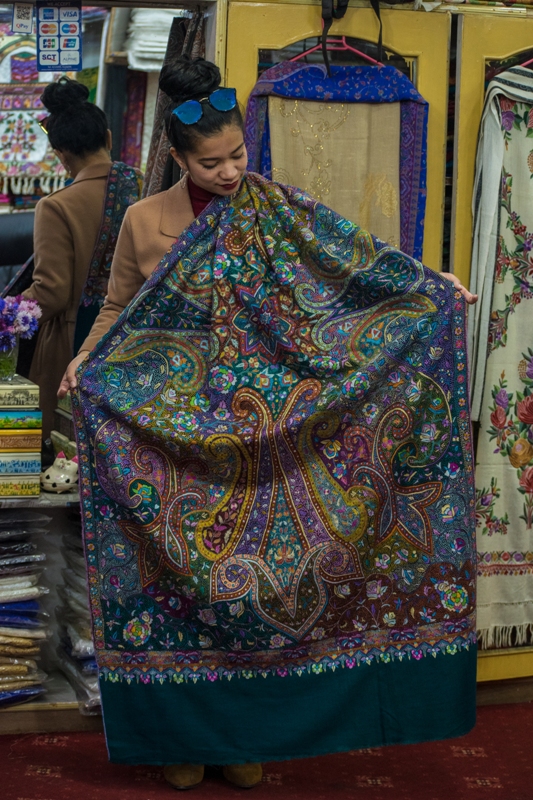
But for some, the transition has been tough. Arshid Bhatt, 38, moved to Kathmandu in 2001 escaping political instability and financial crisis along with three of his friends. In his aspirations of becoming a salesman and creating a market for the indigent local craftsmen, Bhatt says his journey was challenging. “As an immigrant, it was tough for me to adjust to this new life in Kathmandu. I couldn’t speak the language. I was verbally bullied by my landlords, and wanted to go back desperately,” he says.
Now, things are better says Bhat. “Once I learned the local language and understood the market, I felt like I was doing the right thing,” says the shareholder and a busy salesman for Crafty Classic in JP Road. He lives away from his wife and daughter, who are still in Kashmir.
Thamel and Lazimpat are hubs for many Kashmiri businesses, but there are shops around the valley as well. “Besides Thamel, you can see the archetypical Kashmiri stores around major 3-star and 5-star hotels in Boudha and Jyatha. Pokhara is also a primary hub,” adds Ahmed. Almost 20-30 almost identical stores showcasing beautiful Kashmiri handwork can be traced across the valley.
The Chinese are key buyers for the Kashmiri traders. “With a large influx of Chinese visitors for the past few years, it’s quite evident why around 70 percent of our sales go to the Chinese crowd. They are willing to purchase in bulk and pay large amounts. The rest of the buyers are primarily Europeans and local Nepali people,” says Inayat.
The community isn’t currently identified by any union or institution. It once used to be, by an association called Kashmiri Welfare Community, of which Bazaz, of New Handicrafts, was once president. “But the association ended in 2012 due to differences within the community,” he says.
Today, this bijou community does not feel the need to be under an institution. “I do not feel there’s any necessity for our community to be taken care of by an institution. The Kashmiris here mostly live independently and the crowd isn’t so intact,” says Rofu.
But the number of Kashmiris in Kathmandu are in good numbers. “We Kashmiris are like potatoes. We are everywhere. Our craft has been able to gain exposure around the world and for that many of us depend on it to earn our living,” adds Dijjo.
Nepali traders who work alongside them have been working in harmony with the Kashmiris. Mingma Sherpa, a trader of Hemp apparel in Thamel, says, “They are also from the mountains and so are we. This diversity has enriched the essence of Kathmandu. We should stand for solidarity, always.”




 5.55°C Kathmandu
5.55°C Kathmandu



